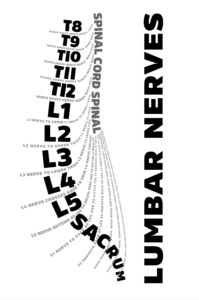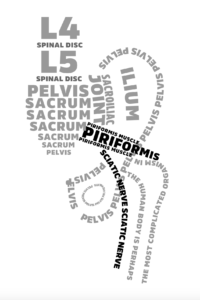Most back doctors are lousy diagnosticians.
The vast majority of my patients who have seen multiple back specialists tell me that I am the only doctor who has ever actually examined their back.
The problem arises from an over-reliance on the MRI as a diagnostic tool.
Few pain doctors are skilled at giving physical exams, and fewer still read their own MRI films, instead relying on the radiologist’s report.
Consequently, any finding on the MRI is assumed to be the cause of the pain.
You must empower yourself with knowledge of the many potential causes of your pain and become your own best advocate during the diagnostic process.
Especially when it comes to the back (where the causes of pain are often multiple and interconnected), you need to reverse the doctor/patient dynamic and ask a lot of questions.
One ailment where the cause of the pain is commonly misdiagnosed is sciatica.
This is an irritation of the sciatic nerve, a large nerve made up of parts of four nerves which emerge from the spinal cord and bind together, running from the L4 vertebra down to S3.
The usual symptom pattern of sciatica is pain or numbness which runs down the back of the leg to the calf and sometimes into the foot.

To the uninformed patient, however, “sciatica” can mean any pain down the leg.
My purpose in this blog is not to train you in diagnosis, but to give you a quick overview of this pain’s many possible causes and empower you to question a rubber-stamp diagnosis made by a doctor who has failed to properly examine you.
We’ll discuss the two most common causes, and in an accompanying video I will summarize several of the more obscure ones.
The most common cause of sciatica is a disc irritating a nerve.
As your spinal cord descends through the spinal canal, nerves are given off at each level. A disc can irritate or compress these nerves, causing pain along the path.
The location of the pain or numbness helps us ascertain where the disc problem may be.

A second common cause of sciatica is piriformis syndrome.
The piriformis muscle runs from the pelvis to the hip and is one of the muscles which stabilizes the hip. When the sacroiliac joint in the hip or the hip joint has dysfunction, this muscle will spasm to protect the joint in question. The problem occurs with the sciatic nerve as it passes under this muscle.
The pattern of pain and numbness this causes is very difficult to differentiate from that caused by a disc.
Here is a classic case of where the MRI can lead to a misdiagnosis. Some studies have suggested that 30% of twenty-year-olds with no pain symptoms have disc bulges and over 90% of sixty-year-olds with no symptoms have significant findings (disc bulges or stenosis) on a spinal MRI.
In other words, many people have disc issues which don’t bother them.
But the diagnostic instinct here is to blame the disc bulge for the symptoms and be done with it.
This brings us to a horror story we see too often, one in which the patient is assumed to have “sciatica” and, coincidentally, is found to have a disc bulge on the MRI. Three epidurals provide some relief but not enough, and surgery is performed.
If the cause of the pain down the leg is something other than nerve irritation, the patient does not get better and falls into a rabbit hole of a diagnosis: “Failed Back Syndrome.”
By empowering yourself with knowledge and carefully considering all the other causes of pain down the leg, you can be your own best advocate and help to arrive at your best treatment option in the process.

